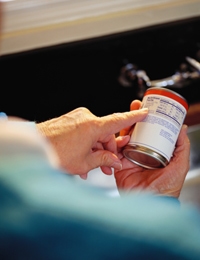
How much notice do you take of food labels? Does a ‘99% fat-free’ claim on a packet make you add it to your trolley more readily?
Food Standards Australia New Zealand (FSANZ) is calling for submissions on its proposed new rules about nutrition and health claims on our food, a process that’s been going on for around a decade with little apparent progress.
At the moment, the regulation around what manufacturers can say on their packaging about health is limited. Fat-free claims, in particular, are only regulated in isolation – in other words the claim “x% fat-free” has to be true, but the product doesn’t have to meet any other health criteria. This has led to an odd situation where we find products on our shelves boasting ‘97% fat-free’ on their labels, but which are in fact unhealthy in every other respect. Examples we see often at Healthy Food Guide are low-fat cereals with heaps of sugar and salt, lollies and sweets with nothing but sugar in them promoted as ‘fat free’; and ‘low fat’ dressings and sauces that are super high in salt.
The new rules, if adopted (and that’s a big ‘if’, given the general opposition of the food industry), would mean manufacturers could only put a ‘fat-free’ claim on a product if that product met other criteria for health as well.
These changes sound like something that would be good for us as consumers. There are so many confusing claims on our food that anything that makes life simpler would surely be welcome. The current situation, I think, makes most of us a bit sceptical about health claims. If these changes were implemented, we would at least know that what we were buying was a generally healthy product, not just that it meets one narrow definition of ‘healthy’.
In the meantime, what are we to do when faced with an array of food in the supermarket? Scrutinising every label would mean the weekly shop would take hours. Are there any rules we can use to make our shopping easier?
I’m not an advocate of the oft-quoted rule to ‘shop the outside of the supermarket’. While there are lots of lovely healthy foods in the outside aisles, there are also lots of healthy foods in the centre aisles, too. I don’t think everything that comes in packets is evil. On the other hand, there’s no doubt that highly processed foods are more likely to be the ones with little nutritional value. So ‘fresh, whole foods as much as possible’ is a good guide. Should we avoid all products with a ‘fat free’ or ‘low fat’ claim? I don’t think so – reduced-fat dairy products, for example, are low-fat foods that can really make a positive health difference. But I think – at least until the new rules come into effect – we are wise to look at anything wearing any kind of health claim with a careful, critical eye.
Originally published in Sunday Star Times, 26 Feb.
www.healthyfood.com










